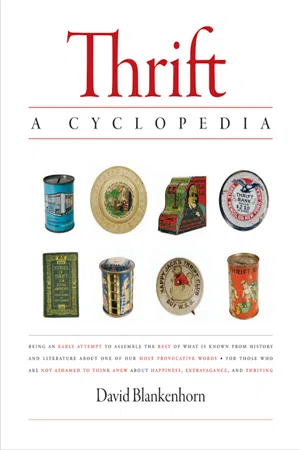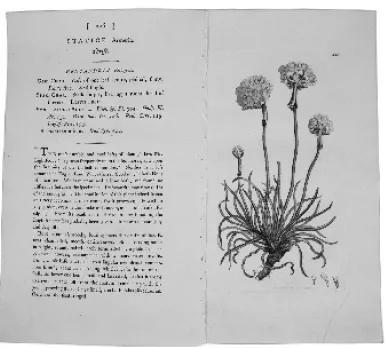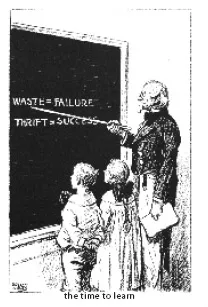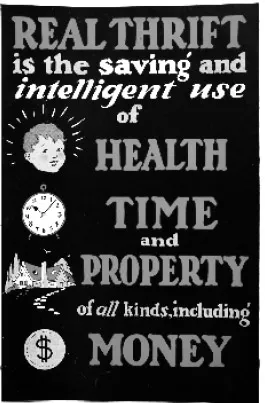![]()
PART ONE
What Is Thrift?
In 1910, the U.S. National Bankers Association, at its annual meeting in Los Angeles, invited as a guest lecturer the noted humorist, journalist, and minister Robert J. Burdette. Burdette’s lecture to the bankers was entitled “Thrift.” His opening query, and the core question that Burdette sought to answer that evening, was “What is thrift?” He confessed that his task was not an easy one.
He began the lecture by reporting, by way of the dictionary, that thrift is “the condition of one who thrives,” but admitted with a smile that such a definition was “not quite good enough.” Then he offered another: “Luck, fortune, success.” Still not quite right. And then another: “Frugality, economical management.” Yes, maybe, but not really. And then one more try: “Good husbandry.” Finally, Burdette simply gave up. He confessed to the bankers: “Now, after all, what is thrift? Just thrift.” The bankers laughed, and Burdette went on his merry way, delivering charming descriptions and anecdotes of thrift, and ending up by suggesting that the highest form of thrift is generosity, since in heaven, according to Burdette at least, they measure a man’s thriftiness by “what he gave away.”1
What (if anything!) can we learn today from these long-forgotten quips delivered to long-deceased bankers after a dinner in Los Angeles nearly a century ago? Well, for starters, let’s realize that, in 1910, it was not at all surprising for a well-known person to deliver a public lecture on “Thrift.” Quite the contrary. I am focusing here on one such talk by Robert Burdette, but there are many others from this era that I could just as easily have chosen. That fact alone should tell us something. People in the United States used to spend quite a bit of time asking themselves, “What is thrift?” Today, we don’t.
Second, earlier generations assumed that the answer to the question, while important, was not easy or straightforward. The topic was complex, not simple. They assumed, therefore, that the question called for some study and reflection, or at least some genuine mental effort. Today, we don’t. Quite the contrary. To the degree that people speak of thrift today, they are probably quite certain that thrift means scrimping and saving, usually up to and including being unpleasantly cheap and stingy. So, after all, what is thrift? What to earlier generations of Americans had seemed a difficult, important question has largely become for our generation an easy, unimportant question. That’s quite a shift! Burdette, for example, concludes that thrift can mean generosity. So have many other thoughtful people, from Lao Tzu writing in China in about 600 BCE, to the great British statesman William Gladstone in the 1890s, to Dr. John M. Templeton Jr., one of today’s very few pro-thrift voices, in his 2004 book, Thrift and Generosity. But is this proposition well known in the United States today? Are very many of us even thinking about it?
James Edward Smith, English Botany, vol. 4, 1795
So just for the fun of it, and for any thrift (that is, good fortune) that it might provide us, let’s try to look with fresh eyes, with innocence even, and ask our ourselves anew, “What is thrift?” When all is properly considered, we will end up with a definition of thrift that is fairly coherent and thrifty (that is, economical), but to get there honestly, we must first work through some complexity. The complexity is necessary for four reasons.
First, thrift is inherently a complex idea. It is a multifaceted philosophical concept for which there is no single precise synonym in the English language. Second, because of this multidimensionality, thrift can mean, and virtually from the beginning has meant, different things to different people. Some tend to emphasize one dimension of the idea, and some another, with still others trying to synthesize. Third, the dominant meaning of the word has steadily evolved over time. “Thrift” in the fourteenth century typically meant something quite different from “thrift” in 1800, which in turn is quite different from the most common meanings of “thrift” in 1950, not to mention the dominant meaning of “thrift” today. To all of these turns and evolutions, due attention must be paid. And finally, unfortunately “thrift” is a word that, especially today, is often defined publicly by people who don’t like it. (I learned this fact the hard way when I helped to convene that group of prominent scholars to opine on thrift.) The result is like asking a gun-control advocate to define “firearm,” or a die-hard Republican to tell you what Democrats truly believe—you are likely to get some nuggets of valid information, but you are unlikely to get the whole story, and often enough you will see streaks of bias infiltrating both the working definitions and the underlying assumptions.
Published 1921
So, to tell our tale thriftily—that is, well, properly, suitably—let’s begin by considering four fairly distinct ways of understanding what thrift is.
![]()
1. Thrift as Growing
ENGLISH PROVERB
On sandy wastes, ere yet the frugal root
Of tender grass can feed the springing shoot
Fringing each sterile bank and rocky rift
Green grows the tufted cushions of the Thrift …
Ah! well named flower, for of a thrift we sing,
Skilled like thyself, a fertile growth to bring
In barren wastes with Hope’s sweet verdure rife
The pledge and potency of statelier life.
WALSHAM HOWE, THE FIRST BISHOP OF WAKEFIELD, “THRIFT—THE PLANT”
Rollin Kirby, 1920
“HOW TO REMOVE TREES,” FITZHERBERT’S THE BOOK OF HUSBANDRY, 1534
TITLE OF A BOOK BY RICHARD MOORE, ABOUT 1612
REV. EDWARD REYNOLDS, A SERMON,
MID-SEVENTEENTH CENTURY
JAMES FENIMORE COOPER, THE PIONEERS, 1823
REPORT FROM DR. E. E. SALMON, U.S. BUREAU
OF ANIMAL INDUSTRY, NOVEMBER 16, 18685
HERMAN MELVILLE, OMOO, 1847
NATHANIEL HAWTHORNE, THE SCARLET LETTER, 1850
HENRY DAVID THOREAU, WALDEN, 1854
WALT WHITMAN, “THE SLEEPERS,” 1855
IRVING TODD, DISCUSSING FARMINGTON, MINNESOTA, 1863
MARY E. RICHMOND, FRIENDLY VISITING AMONG THE POOR: A HANDBOOK FOR CHARITY WORKERS, 1903
Poster, 1929
… We live in an economic age, and we must not be ...









